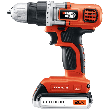Understanding Caulks and Foams
Written by Lee Wyatt (last updated January 19, 2018)
Whether you are looking to weatherproof your home, or you simply want to increase its overall energy efficiency then you need to look at using caulks and foams. Before you go out and purchase just any kind of caulking or foam, you need to make sure that you understand the basics. By understanding caulks and foams, you can be sure that you choose the right one for your specific needs. Here is a brief guide that you can use to help ensure you make the right decision.
- Foam sealants. Foam sealants are primarily used for filling gaps that measure at least 1/2 inch in width. Ideally these are used to fill these gaps, but care should be taken. As these foams cure, they will expand. This means that they will fill up the cracks on their own, but if forced into extremely small areas (such as a window frame) they can end up warping the frame.
- Kraton-base caulking. This type of caulking will stick to just about anything, you can paint on it, and best of all it comes in a variety of colors. As opposed to foams, this caulking will shrink as it cures. If you need to clean up this stuff, make sure that you use mineral spirits to do so.
- Styrene-bautadiene rubber. Also called SBR caulking is ideal for working with damp wood, or even treated lumber. This type of caulking is extremely easy to work with, but needs to have plenty of ventilation since the fumes are fairly toxic. If you decide to paint this caulking, make sure that you use paint thinner to clean up any mess.
- Oil-base painter's caulk. This particular type of caulking is perhaps the least expensive on the market, but will not last as long as the other variants. Typically this caulking will have a life of about three years before you need to replace it. It also isn't very elastic, which means that has a tendency to pull away during cold weather, but is paintable when it is finally cured.
- Latex caulk. Latex caulking is primarily intended for indoor use only. It goes on very easily, and sticks only to porous materials. In addition, this type of caulking will last for a good 10 years before you really need to replace it, but is not particularly elastic.
- Silicone caulk. Best known for its use in plumbing this type of caulking can last for around 50 years, if the proper care is taken. However, if you accidentally make a mess, you will need to use a solvent to clean it up. In addition, not all silicone caulking is paintable, and often requires a primer in order to apply it.
- Acrylic latex. Particularly sticky, this caulking is good for just about all materials, even those which are damp. You can paint this caulking when it is dried, and is especially good for use around windows or doors. Best of all, this caulking can be cleaned up quickly if there is a mess by simply using some water.
- Butyl-rubber caulk. This caulking will last between three years and ten years, is highly elastic, and exceptionally resistant to water. Unfortunately, this caulking is fairly difficult to work with so care needs to be taken when you do so.
- Elastomeric copolymers. Another type of caulking that will last for up to 50 years if proper care is taken. This type of caulking can be applied to damp surfaces, and will stick to a large variety of surfaces. If you happen to make a mess, you will need to clean it up with the help of a lacquer thinner. Unlike any other caulking, you can apply this type of caulking in the middle of freezing weather, which can be exceptionally helpful in certain circumstances.
- Urethane caulks. While this will stick to most surfaces, even brick and stone, it usually requires a primer to apply it. Be aware that while this is a very durable caulking (which can last between 20 and 50 years) it will not stick to damp materials.
Author Bio
Lee Wyatt
Contributor of numerous Tips.Net articles, Lee Wyatt is quickly becoming a regular "Jack of all trades." He is currently an independent contractor specializing in writing and editing. Contact him today for all of your writing and editing needs! Click here to contact. Learn more about Lee...
Buying Fruit Bushes
If you are thinking of putting some bushes in your yard, you may want to consider buying fruit bushes. Not only will they ...
Discover More
Storing Thanksgiving Decorations
Thanksgiving traditionally marks the start of the holidays for many people. Take a little time and effort to store your ...
Discover More
Window Security
When talking about window security, many people think about security or alarm systems instead of thinking about things ...
Discover More
More Home Improvement Tips
Choosing Insulation
Insulation is one of the best ways possible to help make your home comfortable. Not only does insulation help heat your ...
Discover More
What are R-Values?
Have you ever wandered through the insulation aisle in your local home improvement store and seen noted on the products ...
Discover More
Conserving Water in the Home
Have you ever noticed how the water bill seems to be getting more and more expensive as time goes by? Well instead of ...
Discover More

Comments